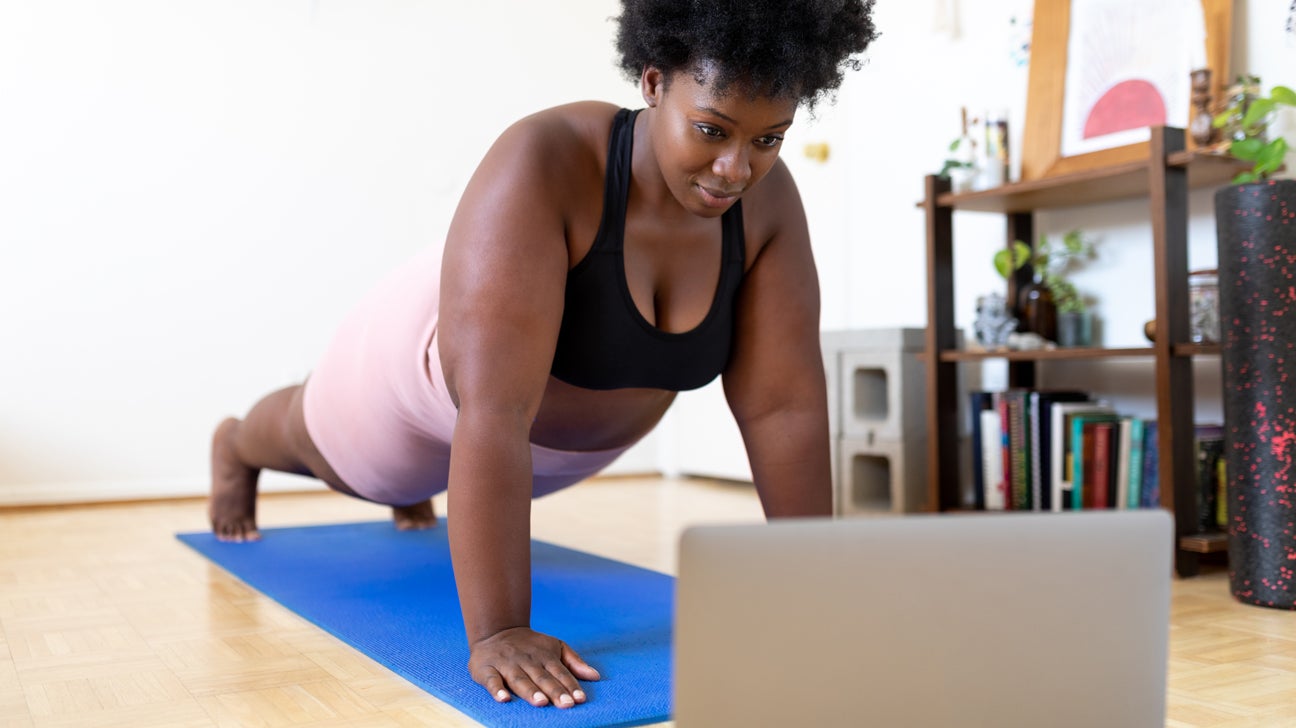
Living with ankylosing spondylitis (AS) can be a real pain in the butt… er, back. Stiffness and lower back pain are some of the main symptoms of AS. You may take meds to help you cope with these symptoms. Exercise can also really help.
If you have back pain, the idea of activity probably doesn’t make you want to jump for joy. It’s best to slowly increase your activity and see how it feels. Many people find that a good movement routine can improve their symptoms. Some specific exercises can help you manage lower back pain.
Benefits of exercise
AS is an inflammatory type of arthritis that targets the spine. This causes back pain and stiffness, especially in the lower back. Research suggests that AS treatments, including exercise, can help manage daily symptoms and prevent AS progression.
Exercise can help you stay flexible and manage stiffness. You likely find that the stiffness is worse first thing in the morning or after sitting for long periods. If you can find ways to move around more, your back will thank you.
Here are some known benefits of activity:
- A mood boost. Happy chemicals called endorphins are released in your brain when you move. There’s nothing like a walk in the fresh air to beat a bad mood. Bonus points if you’re doing something you like!
- Flexibility. AS can lead to a lack of mobility in the spine. Moving more and having a good stretching routine can keep your spine more flexible. The more you move, the more you’ll be able to keep moving.
- A happy heart. The inflammation of AS can increase the risk of heart disease. Exercise is good for your heart. Activity can also help you manage or prevent high blood pressure and high cholesterol levels.
- Reduced pain and stiffness. The pain and stiffness of AS come from inflammation in your spine and joints. When your joints are inflamed, muscles around your joints start to tighten. Movement helps keep joints and muscles happy.
- Better posture. In advanced AS, damage from inflammation can start to change the shape of your spine. Some exercises can strengthen your core and improve your posture. This puts less pressure on your spine.
Types of exercise
There are many ways to move. Try to dip into these categories for a mix of exercises:
- Stretches. Stretching is key to staying active and flexible. Stretches that target your back can reduce stiffness and pain. Just think of what you’ll be able to accomplish when you don’t feel like you’re 100 years old.
- Strength. Strength exercises help you build and maintain muscle. There’s no need to aim for mega muscles or a six-pack — getting even a little stronger can help daily activities feel a bit easier. And stronger core muscles can improve your posture.
- Aerobics. Does the word “aerobics” make you think of a class full of neon leg warmers? If that’s your thing, go for it! If biking, walking, or swimming is more your style, that’s cool too.
- Balance. As we get older, balance doesn’t come as naturally. Good balance and stability help prevent falls.
- Posture. When your spine is aligned, it puts less pressure on your back and joints. AS can cause your spine to slowly pull you into flexion (hunching forward), and resisting that by trying to maintain upright posture is key. Extension-based movements (those that involve arching backward) can help.
- Breathing. Breathing may seem simple, but doing it right can make a difference. Controlled breathing can get you a better stretch and improve your endurance for cardio. Breathe out slowly as you stretch, and breathe in as you relax. Make sure not to hold your breath. Deep breathing can also be a great stress reliever.
Exercises to try
Here are some exercises specifically chosen to help reduce the back pain of AS. Some help stretch your chest or back, and others can strengthen your core or improve your balance or posture.
Cat-Cow stretch
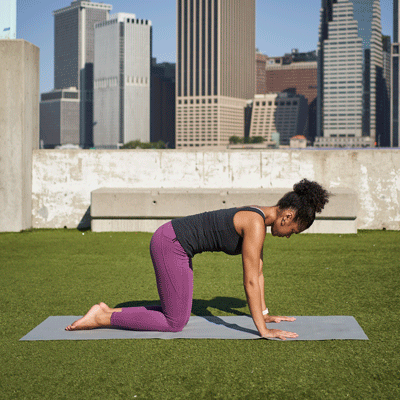
This is a great stretch for your whole spine.
Start on your hands and knees, with hands right under shoulders. Arch your whole back while letting your head and neck gently drop down. Imagine that you’re an angry or scared cat.
Hold this position for a moment, and then curve your spine down by lowering your belly. Raise your head as if you’re mooing like a cow (sound effects optional).
Alternate arm/leg raise

This one is good for strength and balance.
Start on your hands and knees, with hands right under shoulders. Keep your body straight. Lift one arm straight out in front of you and the opposite leg straight behind you. Keep both parallel to the floor.
Hold the position and try not to tip over. When you’re ready, switch to the opposite arm and leg.
Bridge
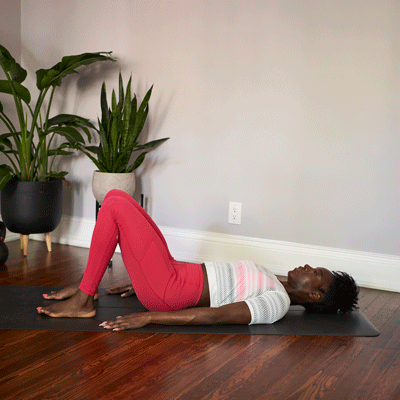
This exercise can help strengthen your core muscles, which can improve your posture and better support your lower back.
Lie faceup with your knees bent and feet flat on the floor. Slowly raise your butt and lower back off the floor while keeping your arms and shoulders down. Hold at the top, and then slowly return to the floor.
Bending side stretch
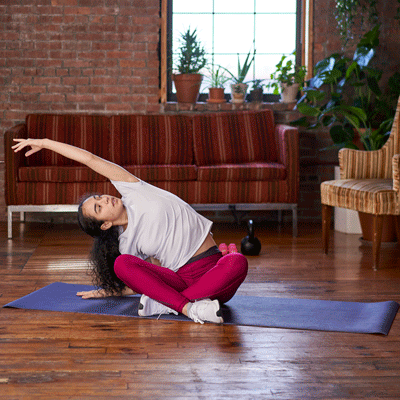
This is a good stretch to open up your chest and stretch out the muscles that support your ribs. It may look familiar from your gym-class days. You can do it sitting or standing, depending on what feels best.
With your back straight, raise your left arm up over your head. Slowly stretch to the right and hold. You should feel a stretch in your left side. Return to the starting position. Do the same movement with your right arm, stretching to the left.
Shoulder blade squeeze
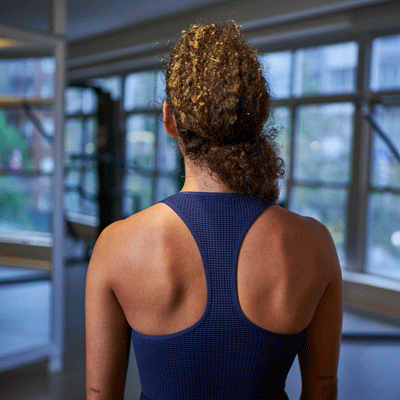
You can do this one while sitting or standing. If you tend to hunch forward when sitting at a desk, this move can help remind you what good posture feels like.
Start with your shoulders relaxed and arms by your sides. Squeeze your shoulder blades together while keeping your head and neck straight. Hold for a moment, then release and repeat.
Plank (with variations)
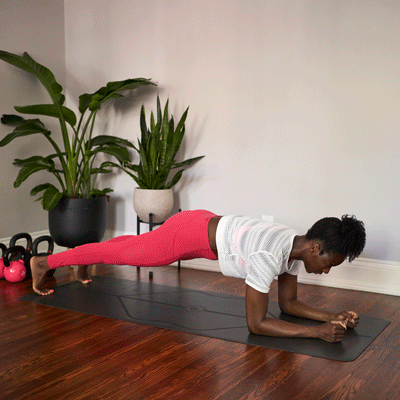
Ah, plank. It’s a classic for boosting core strength, but it’s not always a favorite. The good news is that there are different ways to do it, depending on what feels right to you.
You can balance on your toes or knees and use your forearms or hands to support yourself. You can also do plank standing, with your hands against a wall. No matter which one you choose, do your best to keep your back and body in a straight line.
Standing leg raises
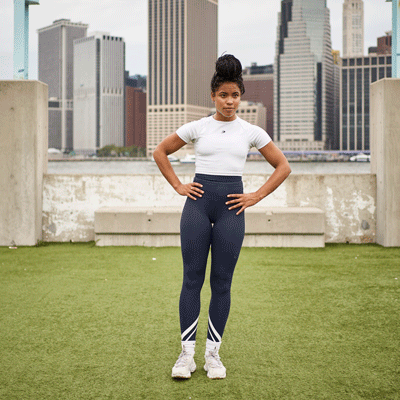
Leg raises are good for strength, balance, and stretching out tight hips. You can support yourself with a table or wall if you need it.
Stand tall with one or both hands on your hips. Slowly raise one leg to the side, and then lower it back down. Repeat a few times before switching to the other leg.
Child’s Pose
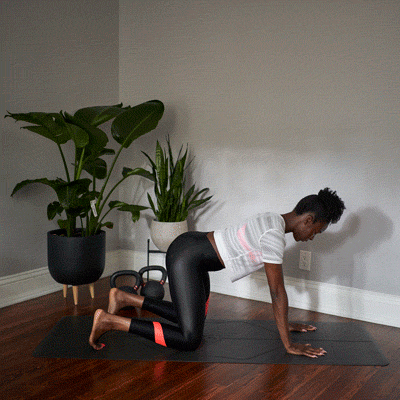
This is a nice full back and hip stretch. Plus, it can be fun to pretend you’re a toddler.
Kneel on the floor, then lie forward over your legs. You can do this with your arms stretched out in front of you or tucked in beside you, pointing toward your ankles.
Chest opener/“marionette stretch”

You can do this stretch while sitting or standing.
With your head pointing straight ahead, pull your shoulders down, keeping your arms slightly out to your sides and palms facing forward. You should feel a stretch throughout your chest.
The name “marionette stretch” comes from the idea that a string is hanging down from the ceiling to keep your head in position. Only a bit creepy.
Walking
Walking made the list because it’s just so darn easy. If you’re not currently active, it’s a good way to start.
Tell yourself you can just do 5 minutes, and then give yourself permission to turn around and go home. Chances are, if you’ve already gotten yourself out the door, you’ll likely go a little farther.
Swimming
If you enjoy the water, feel free to channel your inner fish. Water activities are gentle on your joints but so good for cardio and strength building.
Tips
Just like any other kind of change you might try to make in your life, getting active takes some planning. Here are some tips to set yourself up for success:
- Get into a routine. Habit is key! Pick a time of the day that feels best for you. Many people find that being active in the morning helps set the tone for a better day.
- Work with a physical therapist. Physical therapists are experts on movement and helping people stay active. They can help you find exercises to address your specific challenges. Plus, everyone could use an exercise buddy or personal cheerleader.
- Start slow and easy. Be kind to yourself as you get into a routine. No need to go super hard on day one. It’s always better to go easier and feel good at the end than to do too much too soon and need more than a week to recover.
- Listen to your body. As you do different activities, pay attention to how your body responds. Some activities may feel great, and others may just not work for you. That’s OK.
Takeaway
Exercise is an important part of managing your AS. But it’s one thing to know that and another to make it happen.
Find exercises and a routine that feels good for you. Moves that help with core strength, flexibility, and balance are best for AS. Consider working with a physical therapist if you need some extra support.
Do your best to get into a routine for the best results. And if possible, try to have fun doing it!

0 Commentaires